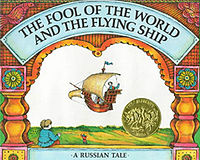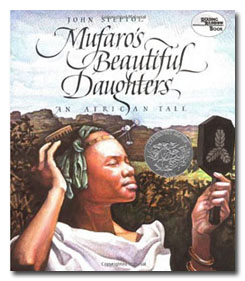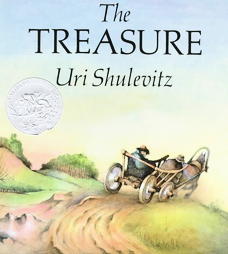Publishing: Farrar, Strauss, and Giroux, New York, 1968
Description: A family has three sons. The oldest two are bright and clever, while the third is the Fool of the World. As such, his parents do not treat him well, but he doesn’t seem to complain. One day, the Czar sends out a decree saying that any man who can build a ship that flies through the air can marry his daughter. The two oldest brothers set out and the mother sends them off with a fanfare and plenty of food. The fool protests to go as well, and after much argument, she sends him off with a few breadcrusts and some water. Along the way the fool meets a wise old man, who turns his meager meal into more extravagant food. He tells the young fool to go into the forest and make the sign of the cross three times before the biggest tree he sees, hit it with his hatchet, and he will have a flying boat. The only caveat is that when he rides it to the Czar’s palace he must pick up anyone he meets along the way. The fool does as he is told and picks up a motley crew of characters who come to his aid when the Czar tries to test the fool and drive him away. Finally, however, the fool succeeds, married the Czar’s daughter, and becomes a very clever man after all.
Programming: I would review with students what a moral is and have them try to discern what they think the moral- or morals- of this tale are. This tale might be compared to other folk and fairy tales, or other works of Shulevitz, such as The Treasure.



